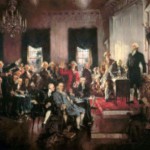(for those catching up: see and and )
The question on Nov. 8th will be whether we should vote to raise taxes on ourselves and our neighbors. I take tax increases very seriously. I might not mind paying more, but I have no right to force my neighbors to pay for something just because I think it is worthwhile. Consequently, I put a high bar on the tax question. There must be a strong case, and all citizens should see some benefit.
In , I wrote about the priorities and fiscal discipline of ISD 197. In , I wrote about the cost – roughly $11,000+ dollars per student.
Should we spend more? Has ISD 197 made the case that they should get more of our hard-earned tax dollars?
The answer is no, for three reasons.
First, I dislike being strong-armed. The ISD 197 board has chosen to combine two separate issues into a single ballot question in order to cast a no vote in the worst possible light. The two issues are the extension of the existing levy, and additional money from a new levy. By posing only a single question, voters are forced to choose between increasing funding, and decreasing funding. Keeping the status quo is not an option. A yes vote is painted as essential, and a no vote is portrayed as armageddon.
In the case of a no vote, armageddon means an immediate operating deficit in FY12, growing quickly to a $6.1 million deficit in FY 16. However, a yes vote yields an operating margin of only $300,000 in FY 13, but still results in a deficit of $1.0 million in FY 14, rising to a $2.6 million deficit in FY 16.
Whether we vote yes, or no, either more cuts or more tax increases will be required in the next year or two just to maintain the status quo.
At best, this is poor planning. At worst, this is an attempt to coerce the voters into providing more funds.
My second reason is that I do not believe that the required fiscal discipline is present in the ISD 197 school board. The board’s job is to set priorities, allocate taxpayers’ dollars according to those priorities, and ensure that priorities are met. The board works for the taxpayers as their representative and watchdog.
From what I see, the board has drifted into a state where its decisions are dominated by politics rather than management discipline. Satisfying every constituency has become the guiding principle. The result has been indecision. The SRAC appears to be intended to address politics, not management. (Any committee of over 50 people is unlikely to get much work done, nor agree on much of anything.)
This is not going to be fixed by giving the district more money.
My third reason is that I do not see a focus on the curriculum. As I said in , the public schools are not there to entertain the students, nor to satisfy every need of every student or parent. The public schools have a claim on our tax dollars to provide a basic education. That education is about fundamental citizenship, like English language skills, history and civics, and basic mathematics. Things beyond that are optional. They may or may not be offered, but are lower priority, and are subject to cuts in hard times. It is the difference between desired and required.
Satisfying everyone is not a workable policy. Sooner or later, the money runs out. When that happens, those hard conversations about what is required and what is desired take place. Priorities must be set, and followed.
Far from being disasters, though, those hard conversations provide focus, and tend to improve the quality of what remains.
When times are tough in the community, household budgets get cut, and school budgets should fall, too. The school district operates by taking tax money from those struggling citizens. It cannot operate as though it has a right to continue unscathed.
ISD 197 needs to make some hard choices, and those choices are not likely to be made if the checkbook remains open.
It is time to say no.

